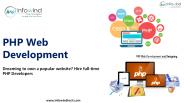Human Development - PowerPoint PPT Presentation
1 / 20
Title: Human Development
1
Human Development
- By Brittney Ryan and Madison Carrasca
2
Basic Information
- Refers to the biological and psychological
development of the human being through out the
life span. - Consists of development from infancy, childhood,
and adolescence to the adulthood. - Also known as Developmental Psychology.
3
Week 1-4
- The connections between the mother and the embryo
begins. - The umbilical cord begins to form.
- The embryos growth centers around the axis,
which will become the spine and spinal cord.
4
Week 5-6
- Chemicals produced by the embryo stop the womens
menstrual cycle. - Brain activity is shown at the 6th week.
- The heart will begin to beat around the same
time. - Limb buds appear where the arms and legs will
appear. - Organogenesis begins.
- The head represents about one half of the
embryos axial length.
5
Week 7-8
- The embryos blood type becomes apparent.
- The embryo is capable of motion.
- The eyes begin to form.
- Organogenesis and growth continue.
- At the end of the 8th week, the embryonic stage
is over and the fetal stage begins.
6
8th Week
- All major structures are shown, including the
hands, feet, head, brain, and other organs are
present but they continue to grow and develop. - The fetus is about 1.2 inches in length and the
heart is beating. - The fetus can make general movements and startles
that involve the whole body. - Some fingerprint motion can be seen.
7
8-15 Weeks
- The fetus continues to move in distinct patterns.
- It also picks up new movements of the arms, legs,
and starts to hiccup and breathing-like
movements. It also stretches and yawns. - At nine weeks the fetus is able to bend its
fingers around objects. - In response to a touch of a foot, the fetus will
bend its legs or curl its toes to move away from
the object. - The face is well-formed and begins to look more
like a human. - The different in appearance of the genitals in
males and females is shown. - A fine layer of hair develops on the head.
- More muscle tissue and bones have developed.
8
16-25 Weeks
- Eyebrows, eyelashes, fingernails, and toenails
appear. - The nervous system develops enough to control
some body functions. - The respiratory system has developed.
- The mother can feel fetus movements at 18-19
weeks.
9
26-38 Weeks
- Fingernails begin to reach the end of the
Fingertips. - Small breast buds are present on both sexes.
- Head hair becomes more thicker.
- The fetus is considered full-term by week 35.
- The fetus maybe 19-21 inches in length when born.
10
Birth to 1 Month(Physical and Language)
- Feedings 5-8 per day
- Sleep 20 hours per day
- Sensory Capacities makes basic distinctions in
vision, hearing, smelling, tasting, touch,
temperature, and perception of pain
11
2-3 Months(Physical and Language)
- Sensory Capacities color perception, visual
exploration, oral exploration. - Sounds cries, coos, grunts
- Motor Ability control of eye muscles, lifts head
when on stomach.
12
4-6 Months(Physical and Language)
- Sensory Capacities localizes sounds
- Sounds babbling, makes most vowels and about
half of the consonants - Feedings 3-5 per day
- Motor Ability control of head and arm movements,
purposive grasping, rolls over.
13
7-9 Months(Physical and Language)
- Motor Ability control of trunk and hands, sits
without support, crawls about.
14
10-12 Months(Physical and Language)
- Motor Ability control of legs and feet, stands,
creeps, apposition of thumb and force-finger. - Language says one or two words, imitates sounds,
responds to simple commands. - Feeding 3 meals, 2 snacks
- Sleep 12 hours, 2 naps
15
1-1 ½ Years(Physical and Language)
- Motor Ability Creeps upstairs and walks (10-20
min) - Can draw lines on paper with crayons
16
1 ½- 2 Years(Physical and Language)
- Motor Ability Runs, kicks a ball, builds six
cube towers, capable of bowel and bladder control - Language Vocabulary of more than 200 words
- Sleep 12 hours at night, 1-2 hour naps
17
2-3 Years(Physical and Language)
- Motor Ability Jumps off of steps, rides a
tricycle, uses crayons, and builds a 9-10 cube
tower - Language Starts to use short sentences, controls
and explores the world with language, stuttering
may appear briefly
18
3-4 Years(Physical and Language)
- Motor Ability Stands on 1 leg, jumps up and
down, draws and circle and cross, and self
sufficient in many routines in home life
19
4-5 Years(Physical and Language)
- Motor Ability Mature motor control, skips, broad
jumps, dresses his or her self, copies a square
and triangle - Language Talks clearly, uses adult speech sound,
has mastered basic grammar, relates a story, and
knows over 2,000 words
20
Sources
- http//en.wikipedia.org/wiki/Psychosexual_developm
ent - http//childdevelopmentinfo.com/development/normal
development.shtml - http//en.wikipedia.org/wiki/Embryo
- http//en.wikipedia.org/wiki/Fetus































